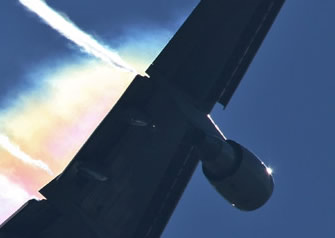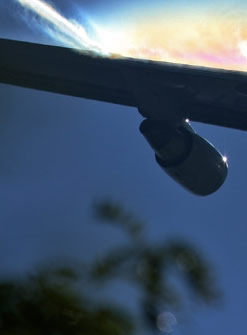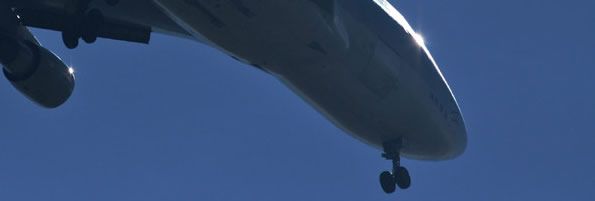The iridescence was
produced by diffraction of sunlight by millions of water
droplets condensed by the airflow over the wings. The
droplets had similar life histories and therefore similar
sizes, ideal conditions for iridescence. The sun was 30-40°
away, indicating that the droplets were small.
Why does condensation occur? Once the pressure of water vapour
in the air exceeds the saturation vapour pressure it is no
longer stable. Provided there are dust particles present
to act as nucle, the excess vapour over the saturation pressure
condenses into droplets. Without nuclei, condensation
is difficult and instead the air becomes supersaturated. However,
when
the supersaturation exceeds a certain critical value water
does condense out very rapidly as a mist of fine droplets
even though nuclei are absent. This is homogeneous nucleation.
The flow over the top of aircraft wings is faster than elsewhere.
The fast flowing air is at a lower pressure and expands. In
doing so it cools. If the air humidity is high enough and
its temperature also fairly high (warm air can hold more water
as vapour than cold air) then conditions might be reached for
heterogeneous or even homogeneous nucleation followed by rapid
droplet growth. In some cases the air might already be supersaturated
before the aircraft passes.
The result? We see trails of vapour from the wings and other
surfaces (note the denser vortices in the Vienna image).
In the above illustartion the droplets
evaporated quickly. Sometimes they persist to join the more
dense trails formed from the water produced by combustion in
the engines.
|









